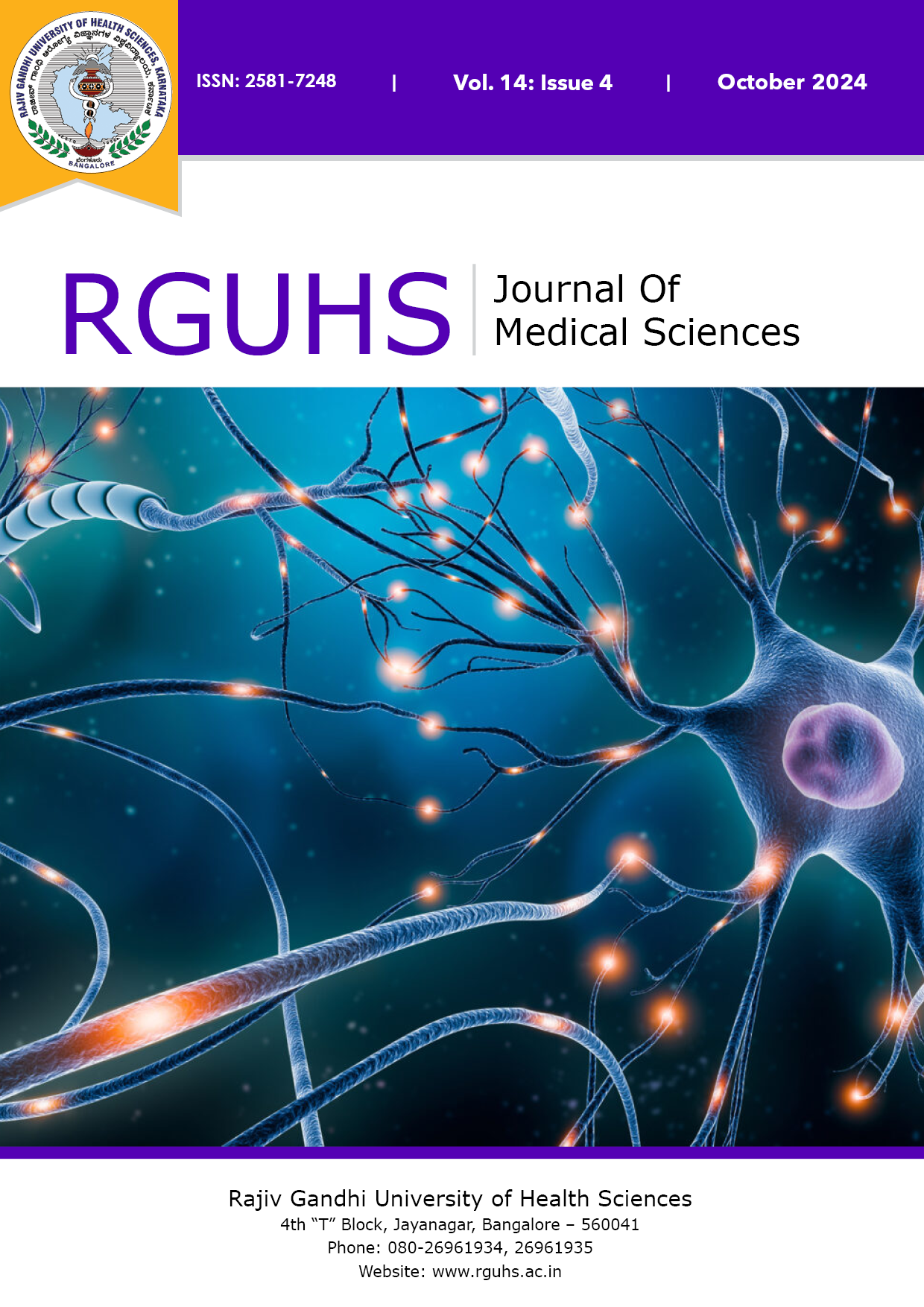
Abbreviation: RJMS Vol: 15 Issue: 1 eISSN: 2581-7248 pISSN 2231-1947
Dear Authors,
We invite you to watch this comprehensive video guide on the process of submitting your article online. This video will provide you with step-by-step instructions to ensure a smooth and successful submission.
Thank you for your attention and cooperation.
Andola S.K1 , Anita A.M 2, Kavitha Yevoor3 , Rajashekhar Patil 4
1Professor and Head Department of Pathology, Associate Professor of Pathology 2, M.R. Medical College, Gulbarga, Assistant Professor of Pathology3 , Karnataka Institute of Medical Sciences, Hubli, Associate Professor of Surgery4 , M.R. Medical College, Gulbarga

Abstract
Extra lymphatic manifestations of filariasis are not caused by adult form of the worm but by microfilaria or by diffusible products from yet undefined parasitic stage or by immune complexes Circumscribed microfilarial granulomata are extremely uncommon and rarely cause clinical illness and have been observed in the spleen and occasionally in other organs.
Two cases of microfilarial granuloma in the spleen are reported here showing nodules with focal collection of eosinophils forming abscesses and granulomas formed by round hyalinised amorphous eosinophilic deposits (characteristic of splendore-hoeppli phenomenon) containing remnants of microfilaria, surrounded by foreign body giant cells, macrophages, fibrosis, and neovascularisation
Keywords
Downloads
-
1FullTextPDF
Article
none
Supporting File
References
none